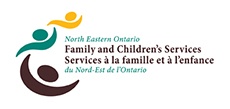About Kinship & Alternate Care
September 18 to 22 is Kinship & Alternate Care Awareness Week 2023. During this week, child welfare agencies celebrate the family and community members who support children and youth when they need it most.
Family engagement, kinship networks, and lifelong connections for children and youth support their safety, well-being, and permanency. The involvement of kin early and throughout child welfare planning prevents placement disruptions and increases positive outcomes for children, youth, and families.
When it is not possible for children or youth to live with their primary caregiver, child welfare agencies first look to family and community for placement options. Kinship placements can involve biologically related kin, members of cultural communities, or individuals with other social, emotional, or community connections, such as teachers, coaches, or neighbours.
Join us in highlighting the important role of kin in supporting the well-being, identity, culture, and belonging needs of children and youth.
Kinship & Alternate Care Placement Options
Kinship and community-based placement options for children and youth in need of protection include:
- Kinship Service: Where children/youth not in care are placed with extended family, kin, or community.
- Customary Care: Where the care of a First Nation, Inuk, or Métis (FNIM) child/youth is provided by someone who is not their parent and follows the customs/traditions of their FNIM community/band.
- Kinship Care: Where children/youth in care are placed with extended family, kin, or community in licensed care.
Kinship & Alternate Care Data
Research shows that broad kin networks are directly linked to better outcomes and positively contribute to the well-being of children and youth in the child welfare system.
Research also demonstrates that in 97% of child welfare investigations, children and youth remain at home with their families. Of the 3% of investigations resulting in a change of residence for children and youth, most are placed in kinship service or customary care (2% of investigations), and fewer are placed in kinship care or other placement types (1% of investigations).
Five-year trends in child welfare data show:
- Consistent rates of kinship service placements.
- A decrease in more formalized placements, including kinship care, legal custody agreements following extended society care, and adoption.
These trends fit with child welfare redesign, improvements with family search and engagement, the child welfare sector’s 9 Reconciliation Commitments, the Truth and Reconciliation Commission of Canada’s Calls to Action, the One Vision One Voice Race Equity Practices, and legislative obligations.
Data tells us that Indigenous, Black, racialized, and 2SLGBTQ+ children and youth continue to be overrepresented in foster care, requiring the sector to explore systemic racism and oppression and the role it plays in all aspects of the Ontario child welfare system, including placement decisions.
